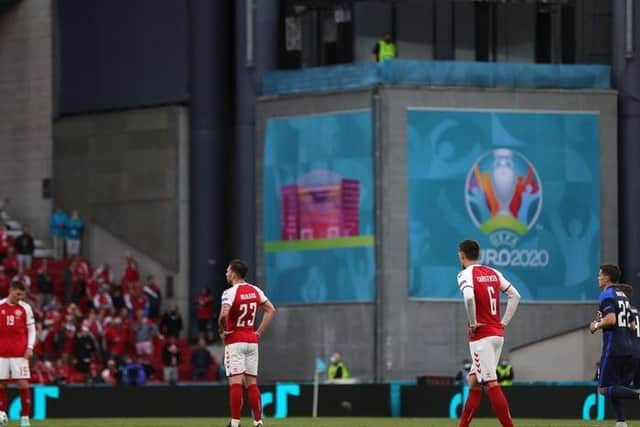Man responsible for live television broadcast of Christian Eriksen’s collapse explains why the footage was shown
and live on Freeview channel 276
Christian Eriksen required CPR and AED on the pitch after crumpling to the turf in at the Parken Stadium, 40 minutes into the Group B opener on Saturday.
Millions of football fans across the world watched medical staff give the 29-year-old chest compressions as they tried to resuscitate him, with many viewers in Britain complaining that the BBC ought to have cut back to the studio rather than continue to broadcast the grim scenes in the Danish capital. Thankfully, Eriksen is now in a stable condition in hospital.


Advertisement
Hide AdAdvertisement
Hide Ad“As you can imagine there is no handbook for these sorts of things,” Amsellem said. “There was a slow-motion of the scene where we can see him fall really clearly, but I immediately forced my teams not to focus on him, not to film him anymore. With more than 30 cameras in the stadium, we could have continued to do so, but at no point did we go and do close shots on him.
“During all that followed, I actually went at one point to the Danes in tears because it was still necessary to show the distress. We also see the emotion of the Finns, that of the fans, but I do not think that we did anything murky.
"Our producer was in conversations with UEFA. The instructions were clear: we were told not to do close-ups, not to film the cardiac massage, but that there was no problem with filming the surrounding emotion."
Speaking to French newspaper L’Equipe, Amsellem continued: “If we do a general wide shot, we don’t show the emotion. That could have been for a long time, but we also have to transmit how it felt in the stadium. We showed the sadness and distress of the people, on the side of the players, the staff and the fans. We also saw unity in this moment of great anxiety, it had to be transmitted. I wouldn’t call it voyeurism.
"If someone had told me, ‘stick with the wide shot’, I would have. But the most important thing, frankly, is that he is OK.”
The original story was published scotsman.com.